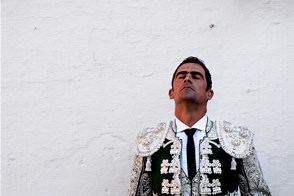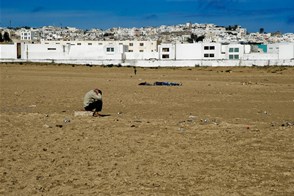The penitential gown in the Spanish Holy Week is generally composed of a tunic and a hood with conical hat (capirote) used to mask the identity of the Nazareno.


On Easter Sunday morning the frankincense smoke flows out of the brass censer and fills the streets of Malaga with heavy aroma.


The throne is owned by cofradía, a religious brotherhood, maintained by Church in the neighbourhood. There might be thousands of brotherhood members participating in the procession.


The thrones (with the Paso scene on the top) are physically carried on the shoulders of the carriers during the Easter celebrations.


The penitents carry large processional candles. The young Holy Week participants often use the candle wax for their children's games.


The paso which is situated on the top of the throne represents a scene or an event from the Bible (Passion) usually featuring Jesus Christ, Virgin Mary and other biblical characters.


The carved wooden sculptures or the thrones are of great antiquity and they are masterpieces having an important role in the history of the Spanish Art.


A traditional robe of a Spanish penitent was adopted as a uniform for the Ku Klux Klan members in the US although the organization has no relationship with Spain.


Some Easter processions are silent with no musical accompaniment, some are followed by brass orchestras playing solemn music with deep drums and screaming trumpets.


A big float in the Holy Week of Málaga, with the paso on the top, may weigh over 5.000 kilograms and there can be up to 250 men carrying it.


Three knots tied in one end of the cincture (rope belt) are the symbols of religious vows – poverty, chastity and obedience – in accordance to the tradition in Christianity.


The cofradía (brotherhood) procession leave the Church of Málaga after celebrating the Mass on Maundy Thursday, during the Holy Week celebrations.


Although the membership in the brotherhood has no age restriction, not long ago women were not allowed in there. It has changed recently and now it is open for every baptized roman catholic.


On the Good Friday penitents from Malaga walk down the streets, carrying the Cross for long hours because they reverence it as a symbol of Christ's suffering, death and redemption.


The Holy Week in Malaga
Malaga, Spain – April 2007
The Holy Week (Semana Santa) in Spain is world known religious event held by Roman Catholic Church. Andalusia, the most southern province of Spain, tends to have the most elaborate processions where thousands of people participate. Cofradías, a neighbourhood based brotherhoods, keep the major part of the tradition. They maintain large ornate thrones with wooden biblical statues which are carried throughout the cities during the Easter feast. Brotherhood members (penitents) wear colorful tunics and conical pointed hats. They walk down the city streets, carrying candles, rough wooden crosses for long hours, some of them barefoot, to demonstrate their penance and commemorate Jesus Christ's suffering, death and redemption.



no comments yet